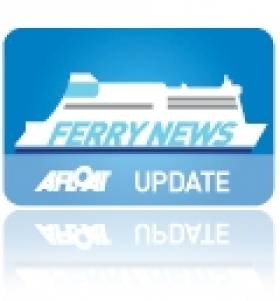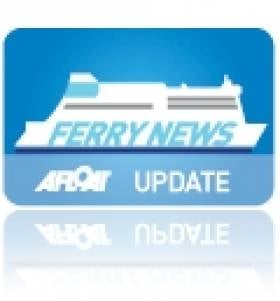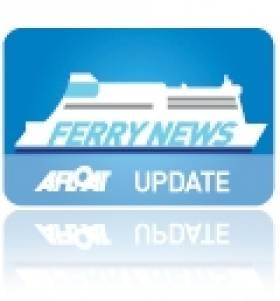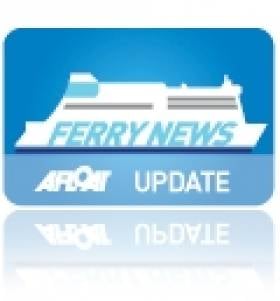Displaying items by tag: PSA
Get ‘Ferry Familiar’ with Travel Campaign
#FerryCampaign – It's not too late to discover special promotional offers from the UK led National Ferry Fortnight campaign which ends later today, writes Jehan Ashmore.
The special offers are not exclusively restricted to the timeframe of the Ferry Fortnight, thus allowing you further time to explore your travel options before making your desired booking.
So to get 'ferry familiar' with the ferry operator members who are participating in the website campaign, visit: www.discoverferries.com/nff2013/ which is the consumer face of the Passenger Shipping Association (PSA).
The campaign showcases and heightens consumer awareness of the UK's extensive ferry services that exceeds 50 routes. Passengers can get ferry familiar with the ease in convenience, value and flexibility made available through ferry travel.
More than 34 million passengers annually travel on routes radiating from ports throughout the UK and ferry companies have invested millions in modern, versatile fleets and upgraded services.
With spas, first-class lounges and fine dining restaurants on board some ships, potential passengers are invited to see the merits and discover the new face of ferries.
The campaign's website will not only offer promotional offers on ferry routes to the UK but also routes serving France, Belgium, Holland, Denmark and Spain.
National Ferry Fortnight Launched
#FERRY FORTNIGHT – With today's St. Patrick's Day festivities, the national event also coincides with the launch of our nearest neighbour's National Ferry Fortnight (17th-30th March) campaign held in the UK, writes Jehan Ashmore.
Each year around 13m people travelled between the UK and Ireland while more than 10m people took to the skies.
The UK has an extensive ferry network of approximately 50 routes including those serving the islands. Of the 11 shipping operators that are members of the Passenger Shipping Association (PSA), five of them serve on routes to Ireland.
Those participating in the ferry campaign which operate on the Irish market are Brittany Ferries, Irish Ferries, Isle of Man Steam Packet Company, P&O and Stena Line.
To read more about all the ferry firms participating in the National Ferry Fortnight campaign click HERE.
Early Start for 'Ferry Fortnight'
#FERRY NEWS – St.Patrick's Day coincides with the start of the UK's annual National Ferry Fortnight (17-30 March) campaign which includes the participation of over 50 routes, including those operating on the Irish Sea, writes Jehan Ashmore.
This year's event organised by the Passenger Shipping Association (PSA) is to be brought forward two months earlier instead of May. According to the PSA the change of dates was designed to "emphasise the great value of family ferry travel at a time when parents have a watchful eye on budgets".
A new official logo will front the campaign's website www.discoverferries.com which is supported by all ferry line members of the association. The two week showcase aims to heighten consumer and media awareness of the UK's extensive ferry firms route network.
PSA members include Brittany Ferries, Condor Ferries, DFDS Seaways, Hovertravel, Isle Of Man Steam Packet Company, Irish Ferries, LD Lines, P&O Ferries, Red Funnel, Stena Line and Wightlink.
The association estimate that around 35 million people, 8 million cars and 140,000 coaches were carried by ferries last year.
New Dates for National Ferry Fortnight
#FERRY FORTNIGHT - This year's 'National Ferry Fortnight' organised by the Passenger Shipping Association is to be brought forward in March instead of May, according to TravelWeekly.co.uk.
The annual event which is used to promote and increase awareness of the UK ferry industry has set the new dates of the fortnight between the 17th-31st March.
According to the PSA the change of dates was designed to "emphasise the great value of family ferry travel at a time when parents have a watchful eye on budgets".
PSA which also represents the UK cruise sector had 13 ferry members but SeaFrance, a Dover-Calais operator recently went into administration.
A new official logo will front the campaign which is supported by all ferry line members of the association. The two week showcase aims to heighten consumer and media awareness of the UK's more than 50 ferry routes.
PSA members including Brittany Ferries, Condor Ferries, DFDS Seaways, Hovertravel, Isle Of Man Steam Packet Company, Irish Ferries, LD Lines, P&O Ferries, Red Funnel, Stena Line and Wightlink will take part.
It comes as the association estimated that around 35 million people, 8 million cars and 140,000 coaches were carried by ferries in 2011.
A series of promotional offers on ferry routes are planned as part of the campaign, to the Continent, Spain, Ireland and UK islands which promoted on the discoverferries.com website.
PSA director Bill Gibbons said: "Particularly for families, Britain's ferry services offer a reliable and flexible way to travel that's good value for money.
"Our ferry members are keen to bring forward the success of National Ferry Fortnight to March 2012 so families can plan and take advantage of the great range of opportunities presented by ferry companies."
The Ferry Fortnight to "Seas the Opportunity"
This weekend sees the start of the National Ferry Fortnight (14-28 May) an initiative to heighten consumer awareness of the extensive ferry network operating to and from the UK, writes Jehan Ashmore.
Central to the National Ferry Fortnight campaign will be a series of promotional offers on ferry routes listed on www.discoverferries.com. The campaign logo will be featured on ferry members' own advertising and website campaigns to highlight the UK's broad network of over 50 routes.
For the first time, ferry passengers will be encouraged to blog and twitter their family and friends when crossing the seas.
Investment in recent years of more modern and versatile fleets has seen an increase in people travelling by ferry, with some 35 million passengers, eight million cars and over 140,000 coaches carried in 2010.
The event is organised by the UK-based Passenger Shipping Association (PSA) and members include Irish owned-ferry operators: Fastnet Line (Cork-Swansea), Celtic Link Ferries (Rosslare-Cherbourg) and Irish Ferries which operate on routes to Wales and France.
In addition the following PSA members (operating between them on Irish Sea, English Channel and North Sea services) are to participate: Brittany Ferries, Condor Ferries, DFDS Seaways, Hovertravel, Isle of Man Steam Packet Co. (IOMSPCo), LD Lines, P&O Ferries, Red Funnel, SeaFrance, Stena Line and Wightlink.
National Ferry Fortnight: 'Seas the Opportunity'
Investment in recent years of more modern and versatile fleets has seen an increase in people travelling by ferry, with some 35 million passengers, eight million cars and over 140,000 coaches carried in 2010.
Central to the campaign will be a series of promotional offers from individual ferry operators which will be announced nearer the dates and also are to be promoted on the www.discoverferries.com website.
National Ferry Fortnight is organised by the UK-based Passenger Shipping Association (PSA) and members include Irish owned-ferry operators: Celtic Link Ferries (Rosslare-Cherbourg) and Irish Ferries (on routes to Wales and direct Irish-France routes).
In addition the following PSA members (operating between them on the Irish Sea, English Channel and the North Sea) are to participate: Brittany Ferries, Condor Ferries, DFDS Seaways, Hovertravel, Isle of Man Steam Packet Co. (IOMSPCo), LD Lines, P&O Ferries, Red Funnel, SeaFrance, Stena Line and Wightlink.



































































